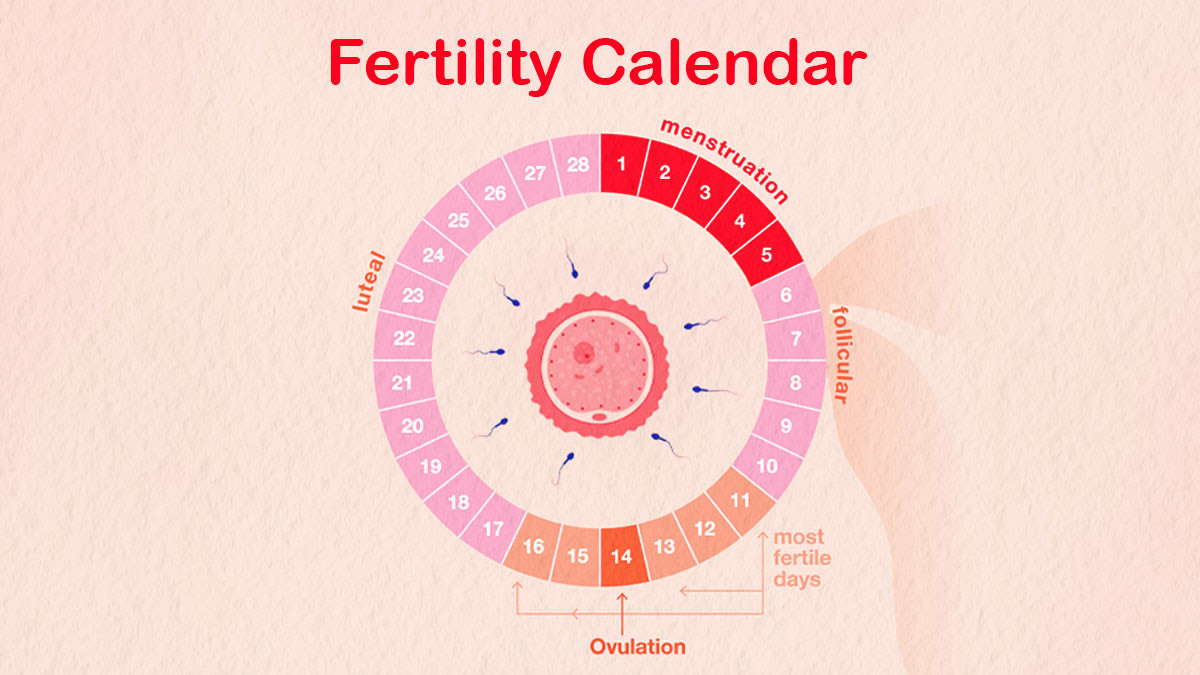
Understanding your menstrual cycle is key not only for conception, but also for avoiding unwanted pregnancy. Many women rely on the ‘safe days method’ or ‘fertility calendar tracking’ to determine when it’s least likely for them to conceive. However, this method requires accuracy and consistency in monitoring one’s cycle. Today, we are going to help you understand how to track your fertility window. Dive right in!
Table of Content:-
The editorial team of OnlyMyHealth reached to experts – Dr Rachita Munjal, Director and Senior Consultant – Fertility at Cloudnine Group of Hospitals, Gurgaon and Dr Sadhna Singhal Vishnoi, Senior Consultant - Obstetrician and Gynecologist at Cloudnine Group of Hospitals, New Delhi. They explained how to calculate your safe days, fertility window, and much more.
Which Are The ‘Safe Days’ To Avoid Pregnancy?
Dr Munjal throws light on what safe days are. “Safe days are the ones in your menstrual cycle when the chances of pregnancy are lowest. Generally, for women with a regular 28-day cycle, the safe window falls before ovulation (first 7 days of the cycle) and after ovulation (from day 21 to 28). Ovulation — when the ovary releases an egg — usually occurs around the 14th day, and pregnancy can occur if sperm fertilizes the egg during this period. Since sperm can survive inside the body for up to 5 days, avoiding unprotected sex from day 8 to 19 is typically recommended to prevent pregnancy,” she explains.
Dr Vishnoi mentions that the menstrual cycle typically lasts 28 to 32 days, starting from the first day of your period. “The fertile window — when conception is most likely — usually falls between Day 10 and Day 18 of the cycle. Therefore, the safe days are usually the first 7 days (Day 1–7) and the last 7 days (Day 21–28), assuming a regular 28-day cycle. However, this can vary depending on cycle length and regularity, so it’s not foolproof,” she adds.

Can You Still Get Pregnant During Safe Days?
Are you wondering whether it’s possible for you to get pregnant during your safe days or not? Our expert answers this for you. “Though less likely, no natural method is 100% reliable because ovulation can sometimes occur earlier or later due to stress, illness, hormonal fluctuations, or irregular cycles. Sperm survival for up to 5 days also adds uncertainty. Therefore, even during ‘safe days’, there’s a small risk of pregnancy,” explains Dr Munjal.
Dr Vishnoi also seconds this point. She adds, “Yes. Safe days reduce but do not eliminate the risk of pregnancy. Ovulation can shift due to stress, illness, travel, or hormonal changes — making natural prediction unreliable. So, if you wish to avoid pregnancy, it’s wise to use barrier methods like condoms even on ‘safe’ days.”
Also Read: Does Sex on Ovulation Day Guarantee Pregnancy? Breaking Down the Myths
How To Calculate Your Safe Days After Period Ends?
Now, let us tell you how to calculate your safe days. Let’s take a look.
“Safe days vary on the length and regularity of your cycle. For a woman with a 28-day cycle and a 5-day period, days 1–7 (during and right after your period) are considered relatively safe. After about a week post-period, fertility rises as ovulation approaches. However, if you have shorter cycles (example, 21–24 days), ovulation can occur sooner, meaning the fertile window could begin as early as day 7 or 8. Thus, tracking your cycle is essential to know when your safe days begin,” explains Dr Munjal.
On this note, the expert shares how to estimate your safe days using the calendar method:
- Track your periods for at least 6 months to identify your shortest and longest cycle lengths.
- Subtract 18 days from your shortest cycle — this gives you the first fertile day.
- Subtract 11 days from your longest cycle — this gives you the last fertile day.

For example, if your shortest cycle is 26 days and your longest is 30 days:
First fertile day = 26 - 18 = Day 8
Last fertile day = 30 - 11 = Day 19
So, days 1–7 and 20–28 are your safe days for avoiding pregnancy.
Can You Get Pregnant If You Have Sex During Your Periods?
There is a common belief that women cannot conceive if they have unprotected sex during periods. Is this a myth or truth? Let’s find out from our doctors.
According to Dr Vishnoi, this is uncommon but not impossible. “Some women have shorter cycles, meaning ovulation can occur soon after menstruation. Since sperm can live up to 5 days, intercourse during the last days of your period can sometimes result in pregnancy,” she says.

Dr Munjal agrees to this as well. She adds, “While it’s rare, pregnancy during menstruation can happen. In women with shorter cycles, ovulation may occur soon after the period ends, and sperm from period-time intercourse can still fertilize an egg. Additionally, menstrual bleeding can sometimes be mistaken for spotting during ovulation, making timing unpredictable.”
Tips to Track Your Fertility Window
Do you know which is the most fertile window of the cycle? “The most fertile window is during ovulation, which is around 14 days before your next period. The 2–3 days before and after ovulation are when the chances of conception are highest,” answers Dr Vishnoi.
On this note, Dr Munjal shares simple hacks to track your fertility window:
- Monitor your cycle: Track your cycle regularly using a calendar or fertility app.
- Observe cervical mucus: It becomes clear, slippery, and stretchy around ovulation.
- Monitor basal body temperature (BBT): It rises slightly after ovulation.
- Use ovulation test kits: They detect the LH (luteinizing hormone) surge that precedes ovulation.
- Stay consistent: Record data for several months to identify patterns.
Also Read: Does Sex Position Affect Pregnancy Chances? We Asked an Expert
The Final Word
Safe days are the time in your menstrual cycle when the chances of conception are lowest. Counting safe days can be an effective and natural way to plan or avoid pregnancy — but only if cycles are regular and tracked carefully. One must keep in mind that safe days reduce, but do not eliminate, the risk of pregnancy.
FAQ
How many days before and after a period are safe days?
There is no universally ‘safe’ period, as ovulation can vary, and sperm can live for up to five days inside the body.How to calculate pregnancy safe days?
To estimate the safe period, if you have a 28-day cycle, your fertile window is from day 9 to day 16, making the safe period days 1-8 and days 17-28.How many days are considered to be safe?
From day 1 of the cycle to day 7, you are considered to be infertile.What are the highest risk days of pregnancy?
The highest risk days of pregnancy for most women is around 10 to 16 days before the next period.
Read Next
World Diabetes Day 2025: Can Diabetic Women Get Pregnant? Here’s What to Know Before Planning a Baby
How we keep this article up to date:
We work with experts and keep a close eye on the latest in health and wellness. Whenever there is a new research or helpful information, we update our articles with accurate and useful advice.
Current Version
Nov 15, 2025 10:55 IST
Published By : Shruti Das